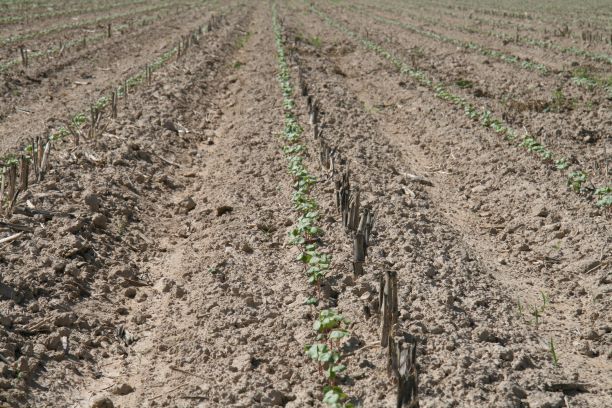The invention of scientists of the subsidiary organization of the “National Agrarian Science and Educational Center” LLP – “Kazakh Research Institute of Cotton Growing” LLP refers to agriculture, in particular to methods of tillage and is used in the cultivation of crops in the irrigated agriculture zone of the south part of Kazakhstan.
The authors of the invention are I. Umbetayev, O.K. Bigarayev. "Method of soil treatment in the cultivation of agricultural crops".
A significant disadvantage of the known methods is the layered use of various tillage units in a certain sequence. This causes large power consumption and unit dimensions.
With two-tier plowing of the soil, a layer of soil is extracted to the surface, which is poor in the content of nutrients and organic matter. This is one of the disadvantages of this plowing technology. Layer-by-layer fertilization to some extent smoothes this disadvantage, but does not completely eliminate it.

In the cotton-growing regions of the south of Kazakhstan, fall plowing is carried out, as a rule, to a depth of 30-35 cm. Such a depth of fall plowing is especially necessary, since here, at high summer temperatures and the presence of irrigation, the processes of decomposition of organic matter are very rapid.
Plowing for sowing cotton and other crops is carried out mainly with a two-tiered plow of the “ПЯ-3-35” brand, where a full seam rotation is achieved.
Compared to a conventional plow, the two-deck skimmers have the same working width as the main bodies, but the plows are smaller and offset by 130 mm towards the field. Skimmers remove the topsoil to a depth of 15-20 cm and dump it to the bottom of a wide and clean furrow. The main bodies of the plow have a special moldboard-ploughshare surface, designed for a full rotation of the seam, remove the lower soil layer to a depth of 25-35 cm, bring it to the surface and completely cover the upper soil layer. The objective of the invention is to develop a method for deep loosening of the soil without turning the layer.
The aim of the invention is to improve the quality of soil cultivation with minimal agrotechnical costs.
To achieve this goal, in the proposed method of soil cultivation, autumn deep loosening of the soil by 55-60 cm is carried out without turning the layer, and in the spring, when cultivating cotton, subsoiling is carried out, and when cultivating other crops - harrowing.
The method is carried out as follows.
In the fall, after harvesting the cotton, the guza-paya is harvested using the “КИР-1.5” unit. After harvesting the guza-paya, the general view of the field. Then, instead of two-tier plowing with a seam turnover, deep loosening of the soil is carried out to a depth of 55-60 cm.
a) harrow and sow cotton in the spring.
b) harrowing, chiseling and sowing cotton are carried out in the spring.
The rest of the technological operations are carried out using conventional technology.
On other crops, for example: after corn and cereals, where the stalks of plants are mowed with harvesting, deep loosening is immediately carried out and in the spring after harrowing, sowing is immediately carried out.
To carry out deep loosening of the soil, special subsoilers with three working bodies are used, which are located at a distance of 90 cm and with a working width of 270 cm, are hung on the “T-150” tractor. Also used is a “ГР-3,4” subsoiler with four working bodies, which are mounted on the John Deere, Amako, Keis and others tractor with a capacity of 160 to 220 horsepower. The productivity of deep loosening is from 2.7 to 3.5 hectares per hour, and from 21.6 to 28 hectares per shift of 8 hours, which is 2.5-3.0 times more than in conventional two-level plowing.
Deep loosening of the soil is carried out at a tractor operating speed of 8-12 km / h.
Subsoilers destroy the plow sole of the soil formed as a result of annual plowing of the land, after the destruction of the plow sole, aeration, physical properties of the soil improve, water permeability increases, volumetric weight decreases, as a result, the root system of agricultural plants develops well, productivity increases, and product quality improves.
The proposed technology of deep loosening of the soil is also effective after harvesting corn, grain and other row crops in irrigated agriculture.
The economic efficiency of deep loosening of the soil in comparison with conventional plowing is:
Saving fuel and lubricants - 60%.
Labor productivity is 40% more
Increasing the yield of agricultural crops by 28-30%.
When applying the new technology, the farmer will save 12-13 thousand tenge from each hectare.
In general, in the region when introducing and applying new technology, farmers can save about 1 billion 750 million tenge. By increasing the yield by 12 centners from each hectare, more than 13.8 billion tenge can be obtained, in total, more than 15 billion tenge can be additionally obtained annually.

